Genesis of Open States Zones in a DNA Molecule Depends on the Localization and Value of the Torque
Abstract
:1. Introduction
2. Mathematical Model
3. Solution of a Model Problem
4. Constant Torque
5. Spatially Localized Constant Torque
6. Spatio-Temporal Localized Torsion Moment
7. Conclusions
Author Contributions
Funding
Institutional Review Board Statement
Informed Consent Statement
Data Availability Statement
Acknowledgments
Conflicts of Interest
References
- Basu, A.; Bobrovnikov, D.G.; Qureshi, Z.; Kayikcioglu, T.; Ngo, T.T.M.; Ranjan, A.; Eustermann, S.; Cieza, B.; Morgan, M.T.; Hejna, M.; et al. Measuring DNA mechanics on the genome scale. Nature 2021, 589, 462–467. [Google Scholar] [CrossRef] [PubMed]
- Basov, A.; Drobotenko, M.; Svidlov, A.; Gerasimenko, E.; Malyshko, V.; Elkina, A.; Baryshev, M.; Dzhimak, S. Inequality in the frequency of the open states occurrence depends on single 2H/1H replacement in DNA. Molecules 2020, 25, 3753. [Google Scholar] [CrossRef] [PubMed]
- Svidlov, A.A.; Drobotenko, M.I.; Basov, A.A.; Elkina, A.A.; Gerasimenko, E.O.; Malyshko, V.V.; Baryshev, M.G.; Dzhimak, S.S. Influence of the 2H/1H isotope composition of the water environment on the probability of denaturation bubble formation in a DNA molecule. Phys. Wave Phenom. 2021, 29, 180–185. [Google Scholar] [CrossRef]
- Sicard, F.; Destainville, N.; Rousseau, P.; Tardin, C.; Manghi, M. Dynamical control of denaturation bubble nucleation in supercoiled DNA minicircles. Phys. Rev. E 2020, 101, 12403. [Google Scholar] [CrossRef]
- Lee, J.; Sung, S.-E.; Lee, J.; Kang, J.Y.; Lee, J.-H.; Choi, B.-S. Base-Pair Opening Dynamics Study of Fluoride Riboswitch in the Bacillus cereus CrcB Gene. Int. J. Mol. Sci. 2021, 22, 3234. [Google Scholar] [CrossRef]
- Forth, S.; Sheinin, M.Y.; Inman, J.; Wang, M.D. Torque measurement at the single-molecule level. Annu. Rev. Biophys. 2013, 42, 583–604. [Google Scholar] [CrossRef] [Green Version]
- Shigaev, A.S.; Ponomarev, O.A.; Lakhno, V.D. Theoretical and experimental investigations of DNA open states. Math. Biol. Bioinform. 2018, 13, t162–t267. [Google Scholar] [CrossRef]
- Chevizovich, D.; Zdravkovic, S.; Michieletto, D.; Mvogo, A.; Zakiryanov, F. A review on nonlinear DNA physics. R. Soc. Open Sci. 2020, 7, 200774. [Google Scholar] [CrossRef]
- Bryant, Z.; Stone, M.; Gore, J.; Smith, S.B.; Cozzarelli, N.R.; Bustamante, C. Structural transitions and elasticity from torque measurements on DNA. Nature 2003, 424, 338–341. [Google Scholar] [CrossRef]
- Grinevich, A.A.; Yakushevich, L.V. On the modeling of the motion of a transcription bubble under constant torque. Biophysics 2016, 61, 539–546. [Google Scholar] [CrossRef]
- Xu, X.; Zhang, Y. Theoretical Model of Transcription Based on Torsional Mechanics of DNA Template. J. Stat. Phys. 2019, 174, 1316–1326. [Google Scholar] [CrossRef] [Green Version]
- Ma, J.; Wang, M.D. DNA supercoiling during transcription. Biophys. Rev. 2016, 8, 75–87. [Google Scholar] [CrossRef] [PubMed]
- Van Oene, M.M. Quantifying the Precision of Single-Molecule Torque and Twist Measurements Using Allan Variance. Biophys. J. 2018, 114, 1970–1979. [Google Scholar] [CrossRef] [PubMed] [Green Version]
- Konyshev, I.; Byvalov, A. Model systems for optical trapping: The physical basis and biological applications. Biophys. Rev. 2021, 13, 515–529. [Google Scholar] [CrossRef]
- Sheinin, M.Y.; Forth, S.; Marko, J.F.; Wang, M.D. Underwound DNA under Tension: Structure, Elasticity, and Sequence-Dependent Behaviors. Phys. Rev. Lett. 2011, 107, 108102. [Google Scholar] [CrossRef]
- Lipfert, J.; Kerssemakers, J.W.; Jager, T.; Dekker, N.H. Magnetic torque tweezers: Measuring torsional stiffness in DNA and RecA-DNA filaments. Nat. Methods 2010, 7, 977–980. [Google Scholar] [CrossRef]
- Strick, T.R.; Bensimon, D.; Croquette, V. Micromechanical measurement of the torsional modulus of DNA. Genetica 1999, 106, 57–62. [Google Scholar] [CrossRef]
- Bradbury, E.M.; Pongor, S. Structural Biology and Functional Genomics; Springer: Berlin/Heidelberg, Germany, 1999; pp. 87–96. [Google Scholar] [CrossRef]
- Ma, J.; Bai, L.; Wang, M.D. Transcription under torsion. Science 2013, 340, 1580–1583. [Google Scholar] [CrossRef] [Green Version]
- Pyne, A.L.B.; Noy, A.; Main, K.H.S.; Velasco-Berrelleza, V.; Piperakis, M.M.; Mitchenall, L.A.; Cugliandolo, F.M.; Beton, J.G.; Stevenson, C.E.M.; Hoogenboom, B.W.; et al. Base-pair resolution analysis of the effect of supercoiling on DNA flexibility and major groove recognition by triplex-forming oligonucleotides. Nat. Commun. 2021, 12, 1053. [Google Scholar] [CrossRef]
- Dzhimak, S.S.; Drobotenko, M.I.; Basov, A.A.; Svidlov, A.A.; Fedulova, L.V.; Lyasota, O.M.; Baryshev, M.G. Mathematical Modeling of Open State in DNA Molecule Depending on the Deuterium Concentration in the Surrounding Liquid Media at Different Values of Hydrogen Bond Disruption Energy. Dokl. Biochem. Biophys. 2018, 483, 359–362. [Google Scholar] [CrossRef]
- Manghi, M.; Destainville, N. Physics of base-pairing dynamics in DNA. Phys. Rep. 2016, 631, 1–41. [Google Scholar] [CrossRef] [Green Version]
- Frank-Kamenetskii, M.D.; Prakash, S. Fluctuations in the DNA double helix: A critical review. Phys. Life Rev. 2014, 11, 153–170. [Google Scholar] [CrossRef] [PubMed]
- Basu, A.; Bobrovnikov, D.G.; Ha, T. DNA mechanics and its biological impact. J. Mol. Biol. 2021, 433, 166861. [Google Scholar] [CrossRef] [PubMed]
- Yakushevich, L.V. Nonlinear Physics of DNA; John Wiley & Sons: Hoboken, HJ, USA, 2007; p. 252. [Google Scholar] [CrossRef]
- Svidlov, A.; Drobotenko, M.; Basov, A.; Gerasimenko, E.; Malyshko, V.; Elkina, A.; Baryshev, M.; Dzhimak, S. DNA dynamics under periodic force effects. Int. J. Mol. Sci. 2021, 22, 7873. [Google Scholar] [CrossRef]
- Svidlov, A.; Drobotenko, M.; Basov, A.; Gerasimenko, E.; Elkina, A.; Baryshev, M.; Nechipurenko, Y.; Dzhimak, S. Influence of environmental parameters on the stability of the DNA molecule. Entropy 2021, 23, 1446. [Google Scholar] [CrossRef]
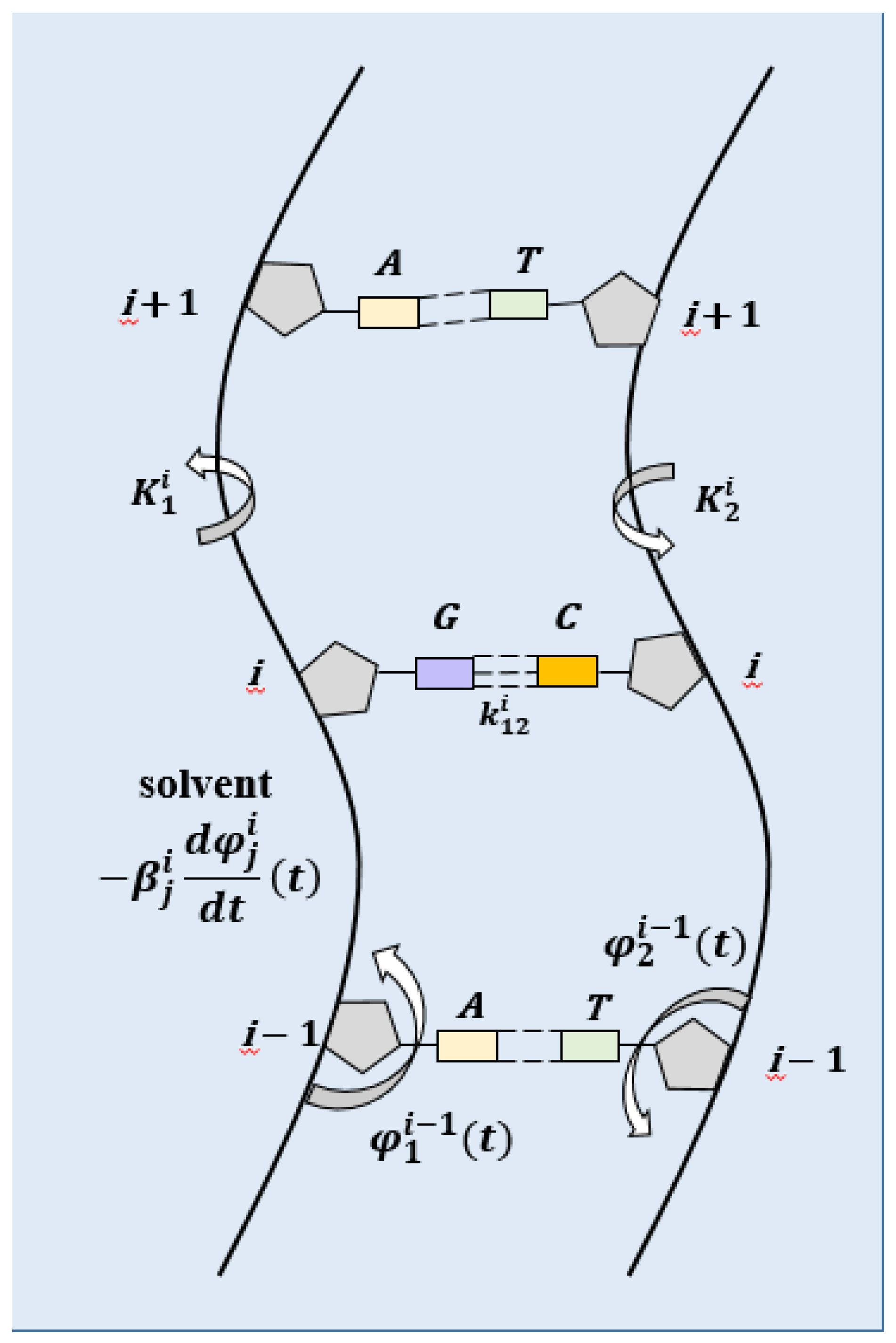



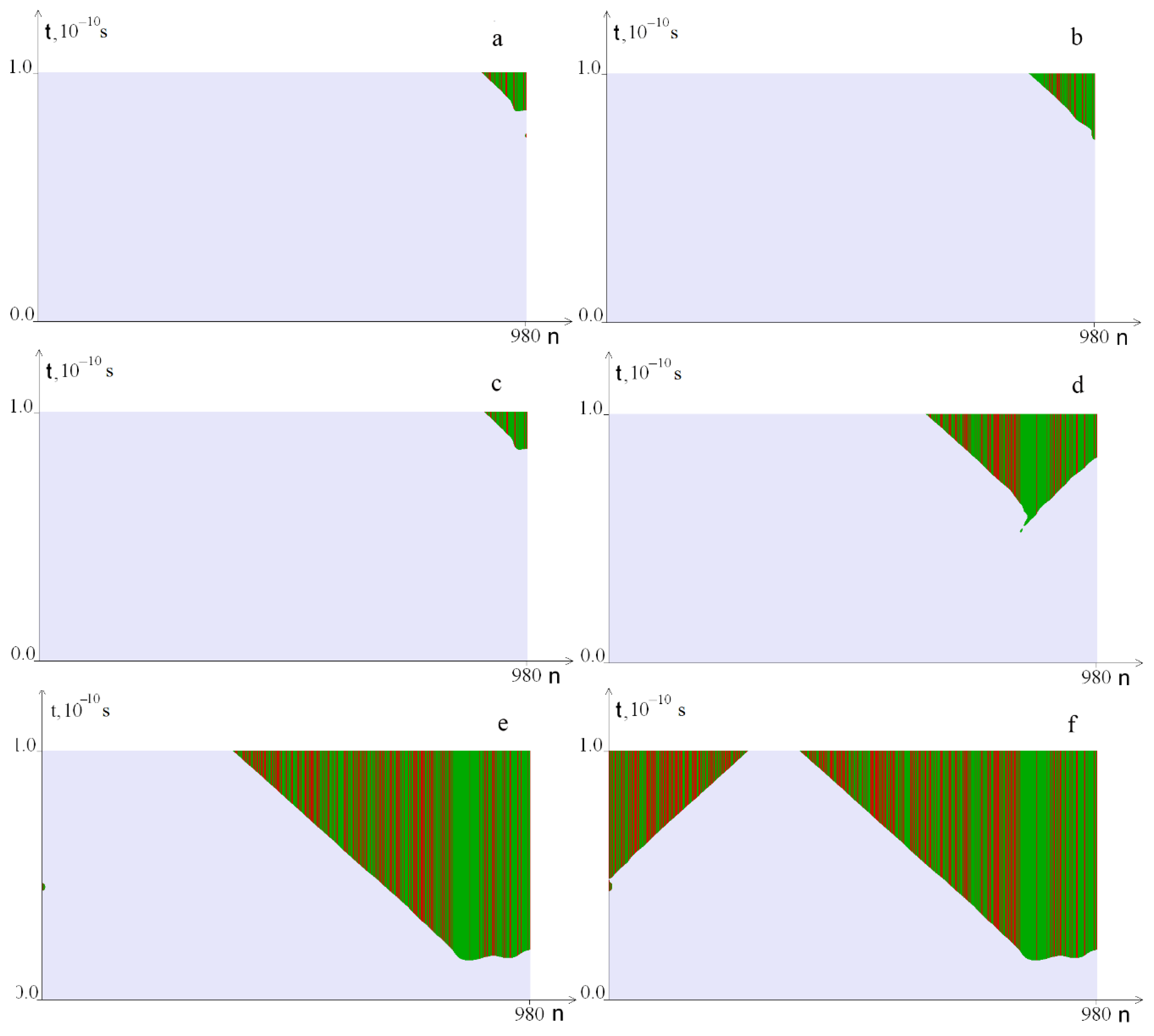
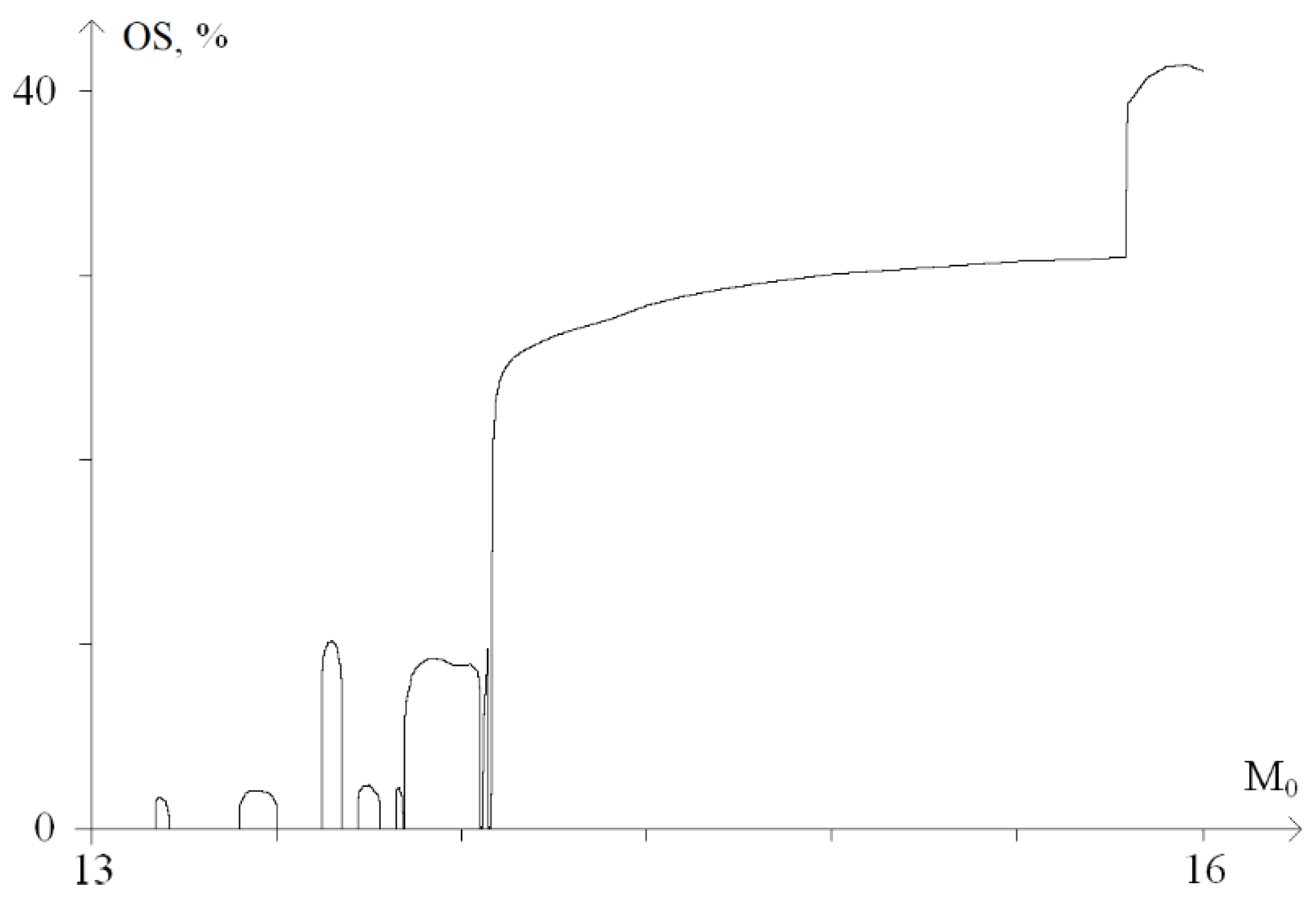


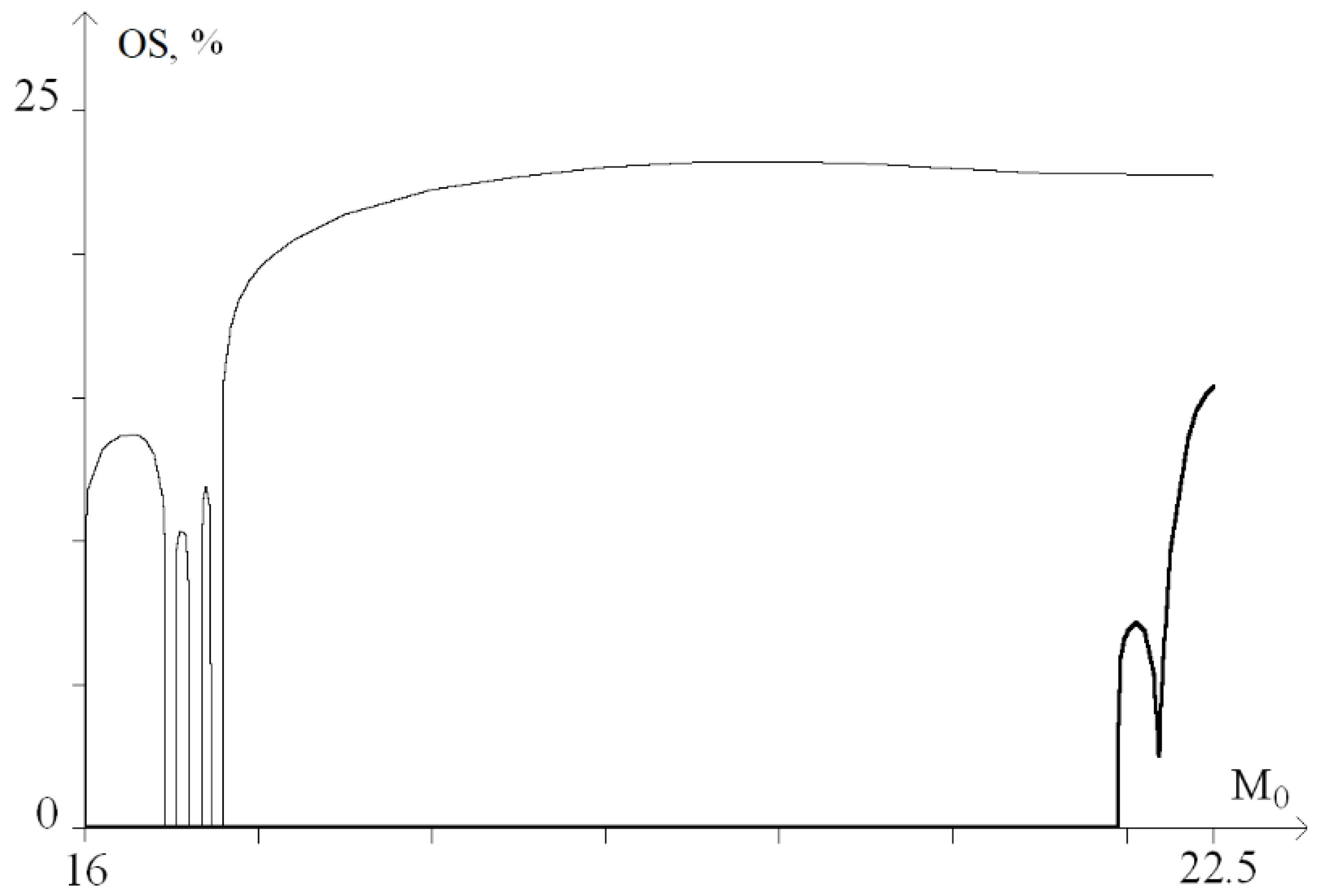




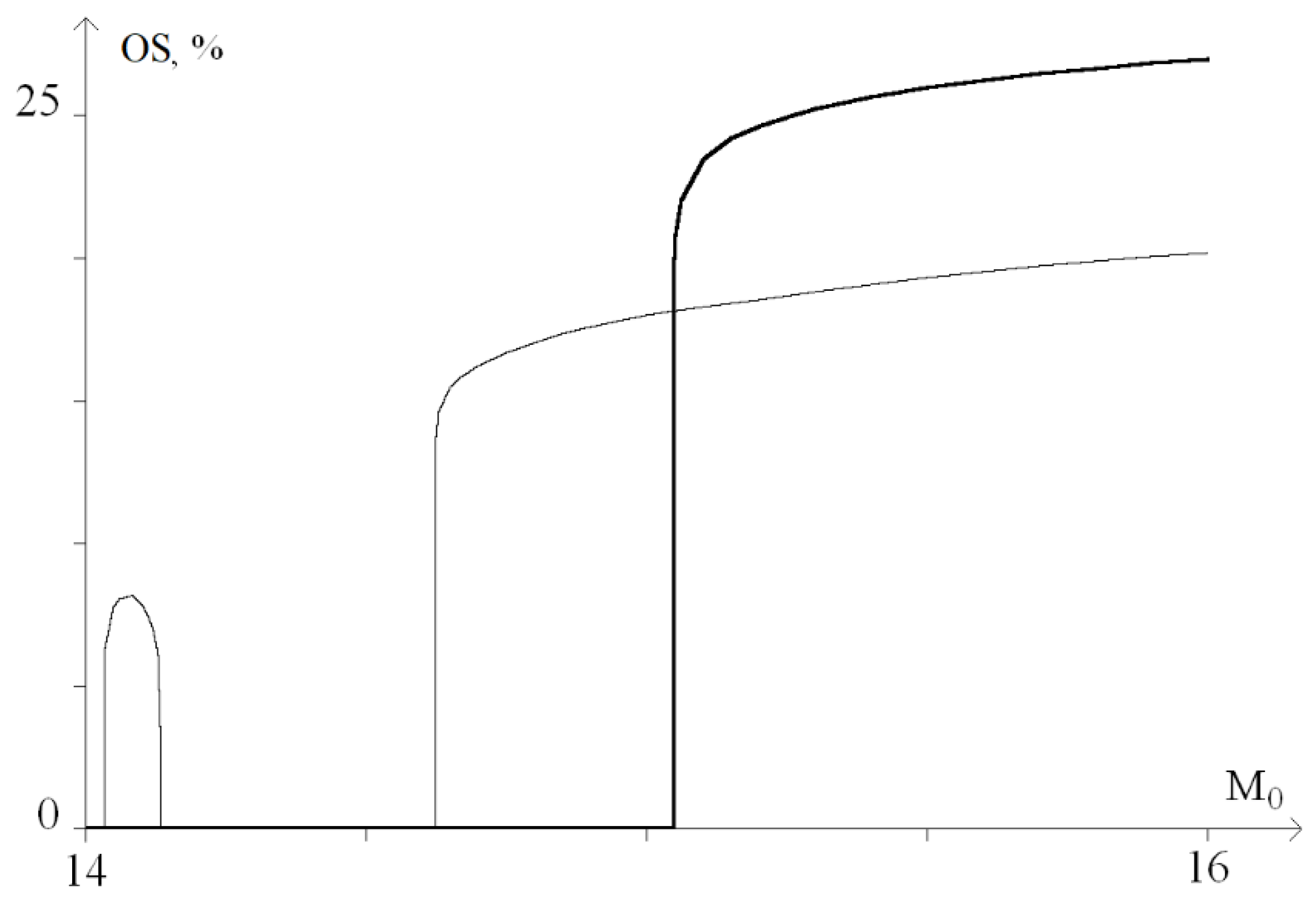


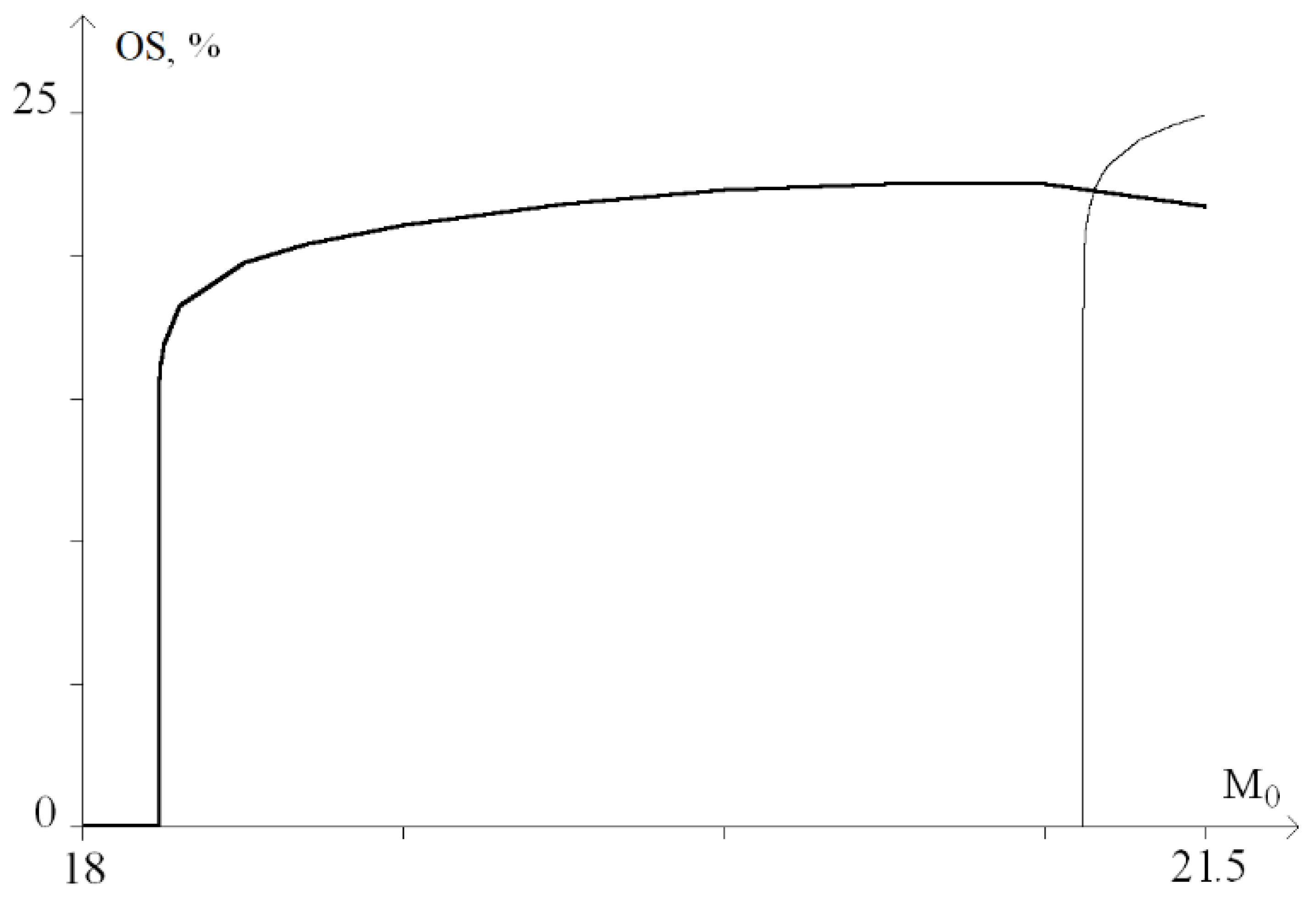

| Type of Base | ||||
|---|---|---|---|---|
| 7.61 | 4.86 | 8.22 | 4.11 | |
| Å | 5.80 | 4.80 | 5.70 | 4.70 |
| , N·m | 2.35 | 1.61 | 2.27 | 1.54 |
| 6.20 | 6.20 | 9.60 | 9.60 | |
| 4.25 | 2.91 | 4.10 | 2.79 |
Publisher’s Note: MDPI stays neutral with regard to jurisdictional claims in published maps and institutional affiliations. |
© 2022 by the authors. Licensee MDPI, Basel, Switzerland. This article is an open access article distributed under the terms and conditions of the Creative Commons Attribution (CC BY) license (https://creativecommons.org/licenses/by/4.0/).
Share and Cite
Dzhimak, S.; Svidlov, A.; Elkina, A.; Gerasimenko, E.; Baryshev, M.; Drobotenko, M. Genesis of Open States Zones in a DNA Molecule Depends on the Localization and Value of the Torque. Int. J. Mol. Sci. 2022, 23, 4428. https://doi.org/10.3390/ijms23084428
Dzhimak S, Svidlov A, Elkina A, Gerasimenko E, Baryshev M, Drobotenko M. Genesis of Open States Zones in a DNA Molecule Depends on the Localization and Value of the Torque. International Journal of Molecular Sciences. 2022; 23(8):4428. https://doi.org/10.3390/ijms23084428
Chicago/Turabian StyleDzhimak, Stepan, Alexandr Svidlov, Anna Elkina, Eugeny Gerasimenko, Mikhail Baryshev, and Mikhail Drobotenko. 2022. "Genesis of Open States Zones in a DNA Molecule Depends on the Localization and Value of the Torque" International Journal of Molecular Sciences 23, no. 8: 4428. https://doi.org/10.3390/ijms23084428
APA StyleDzhimak, S., Svidlov, A., Elkina, A., Gerasimenko, E., Baryshev, M., & Drobotenko, M. (2022). Genesis of Open States Zones in a DNA Molecule Depends on the Localization and Value of the Torque. International Journal of Molecular Sciences, 23(8), 4428. https://doi.org/10.3390/ijms23084428






